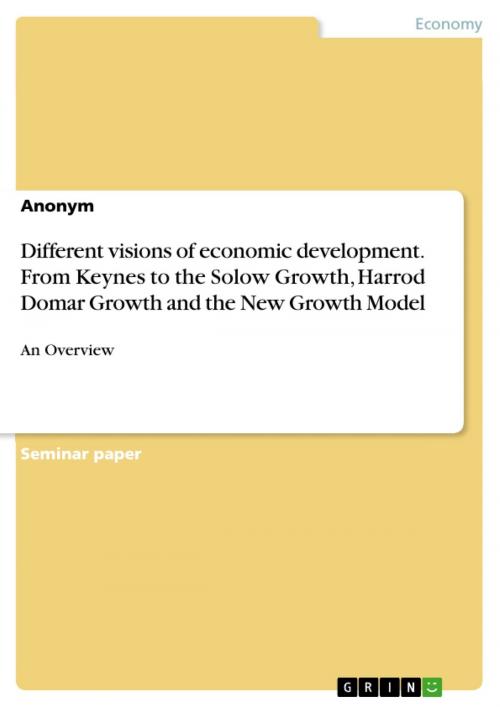Different visions of economic development. From Keynes to the Solow Growth, Harrod Domar Growth and the New Growth Model
An Overview
Business & Finance, Economics, Macroeconomics| Author: | Anonymous | ISBN: | 9783668091498 |
| Publisher: | GRIN Publishing | Publication: | November 20, 2015 |
| Imprint: | GRIN Publishing | Language: | English |
| Author: | Anonymous |
| ISBN: | 9783668091498 |
| Publisher: | GRIN Publishing |
| Publication: | November 20, 2015 |
| Imprint: | GRIN Publishing |
| Language: | English |
Seminar paper from the year 2015 in the subject Economics - Macro-economics, general, grade: 2,3, Berlin School of Economics and Law, language: English, abstract: In this article four economic development models are described. The first one is the basis of the neoclassical theory of economic growth, the Solow model which deals with the exogenous growth. The second model is from Keynes. The third one is the Harrod-Domar model which is the basis of the Postkeynesian theory of economic growth and the last model deals with the endogenous growth and forms the basis for the new-classical theory of economic growth. In the following four different models are indicated with the help of the method of the literature-based analysis. In every economic development model the origin, the acceptances and the criticism are performed and the frame of this work is not enough to give every derivation. In the end the result summarizes this housework.
Seminar paper from the year 2015 in the subject Economics - Macro-economics, general, grade: 2,3, Berlin School of Economics and Law, language: English, abstract: In this article four economic development models are described. The first one is the basis of the neoclassical theory of economic growth, the Solow model which deals with the exogenous growth. The second model is from Keynes. The third one is the Harrod-Domar model which is the basis of the Postkeynesian theory of economic growth and the last model deals with the endogenous growth and forms the basis for the new-classical theory of economic growth. In the following four different models are indicated with the help of the method of the literature-based analysis. In every economic development model the origin, the acceptances and the criticism are performed and the frame of this work is not enough to give every derivation. In the end the result summarizes this housework.















